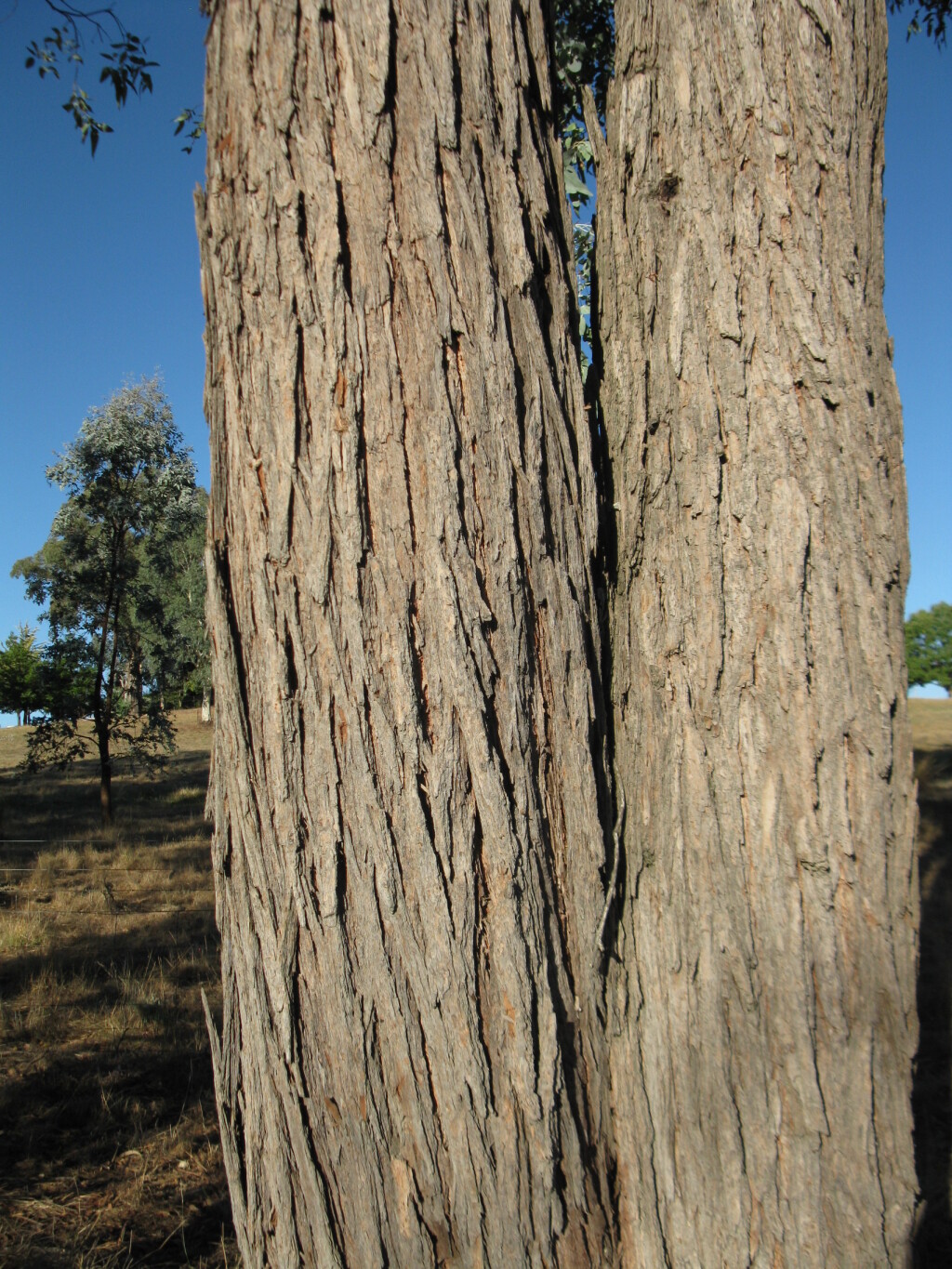Eucalyptus cinerea subsp. victoriensis
Rule & N.G.WalshTree to 30 m tall; bark thick, fibrous, furrowed longitudinally, grey over red-brown, persistent into canopy. Canopy of mature tree composed of juvenile and intermediate leaves. Juvenile leaves sessile, opposite for many pairs, orbicular to broadly ovate, 2–3 cm long and wide, glaucous, persisting into the adult canopy; adult leaves petiolate, alternate, lanceolate to slightly falcate, 6–10 cm long, 1–2.3 cm wide, concolorous, dull, grey-green; reticulation dense, with few to numerous, island oil glands, confined to outer canopy of mature trees. Inflorescences axillary, unbranched; peduncle to 2–7 cm long, 3-flowered; buds subsessile or with central bud shortly pedicellate, diamond-shaped, 5–7 mm long (not including pedicel to 2 mm), 3–4 mm diam., scar present; operculum obtuse-conical; stamens inflexed; anthers dorsifixed, cuneate; ovules in 4 vertical rows; flowers white. Fruit sessile or shortly pedicellate, obconical to campanulate, 4–5 mm long, 3–5 mm diam.; disc narrow, flat or slightly ascendingraised-annular; valves 3 or 4, exserted; seed grey-brown to blackish, cuboid flattened-ellipsoid, minutely pitted, hilum ventral. Flowers Mar.–May.
VRiv, GipP, NIS, HNF. Rare, confined to hilly country to the north and north-east of Beechworth where occurring on clay loam soils derived from granite. Undoubtedly formerly commoner in this area but now reduced by clearing for agriculture.
Differs from subsp. cinerea in the presence of alternate, adult leaves in the outer canopy. E. cinerea subsp. triplex, restricted to south-eastern NSW and ACT, also develops adult leaves but is smaller, often mallee-like, and has larger fruits.
Brooker, M.I.H.; Slee, A.V. (1996). Eucalyptus. In: Walsh, N.G.; Entwisle, T.J., Flora of Victoria Vol. 3, Dicotyledons Winteraceae to Myrtaceae, pp. 946–1009. Inkata Press, Melbourne.
 Spinning
Spinning